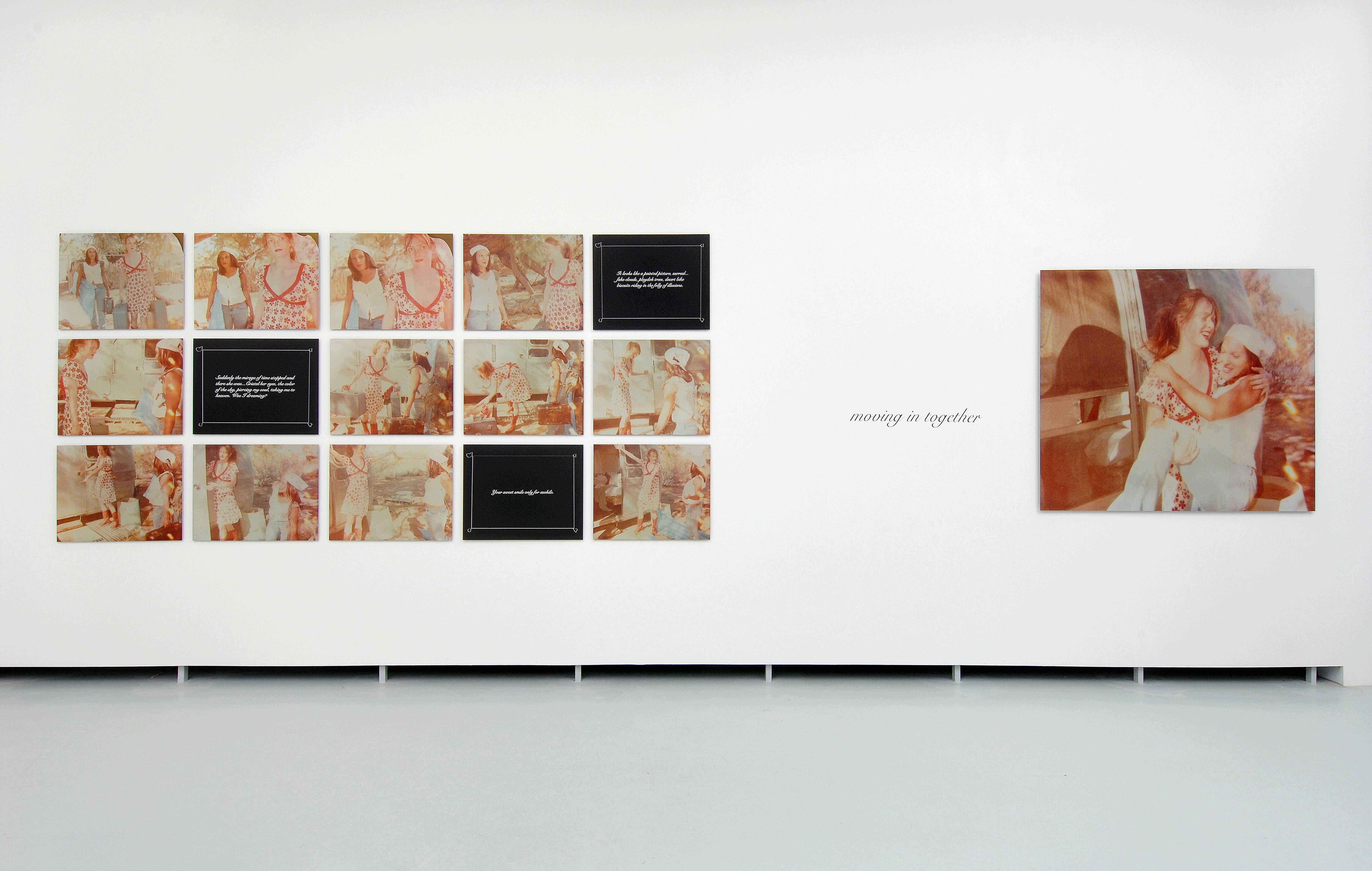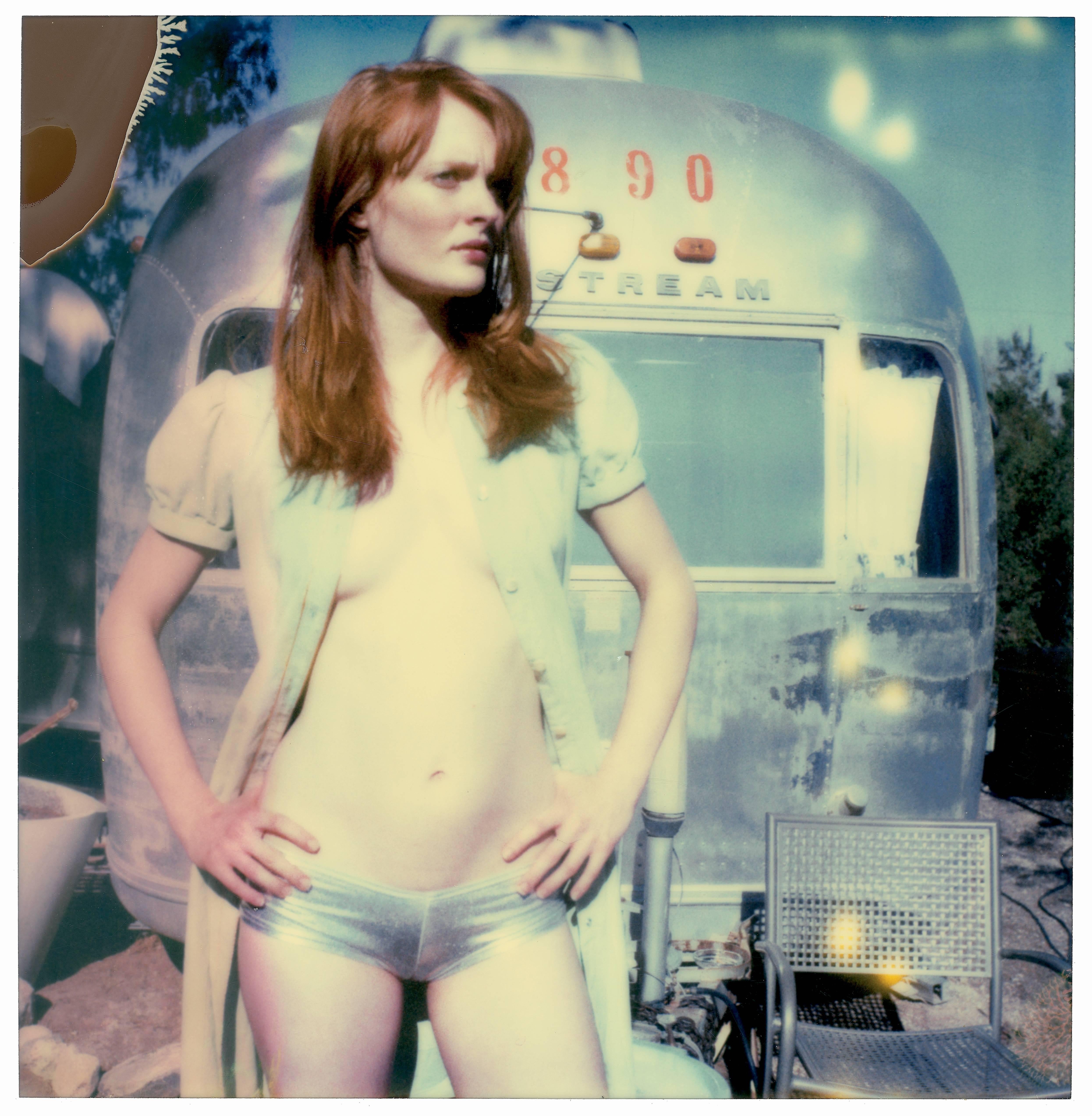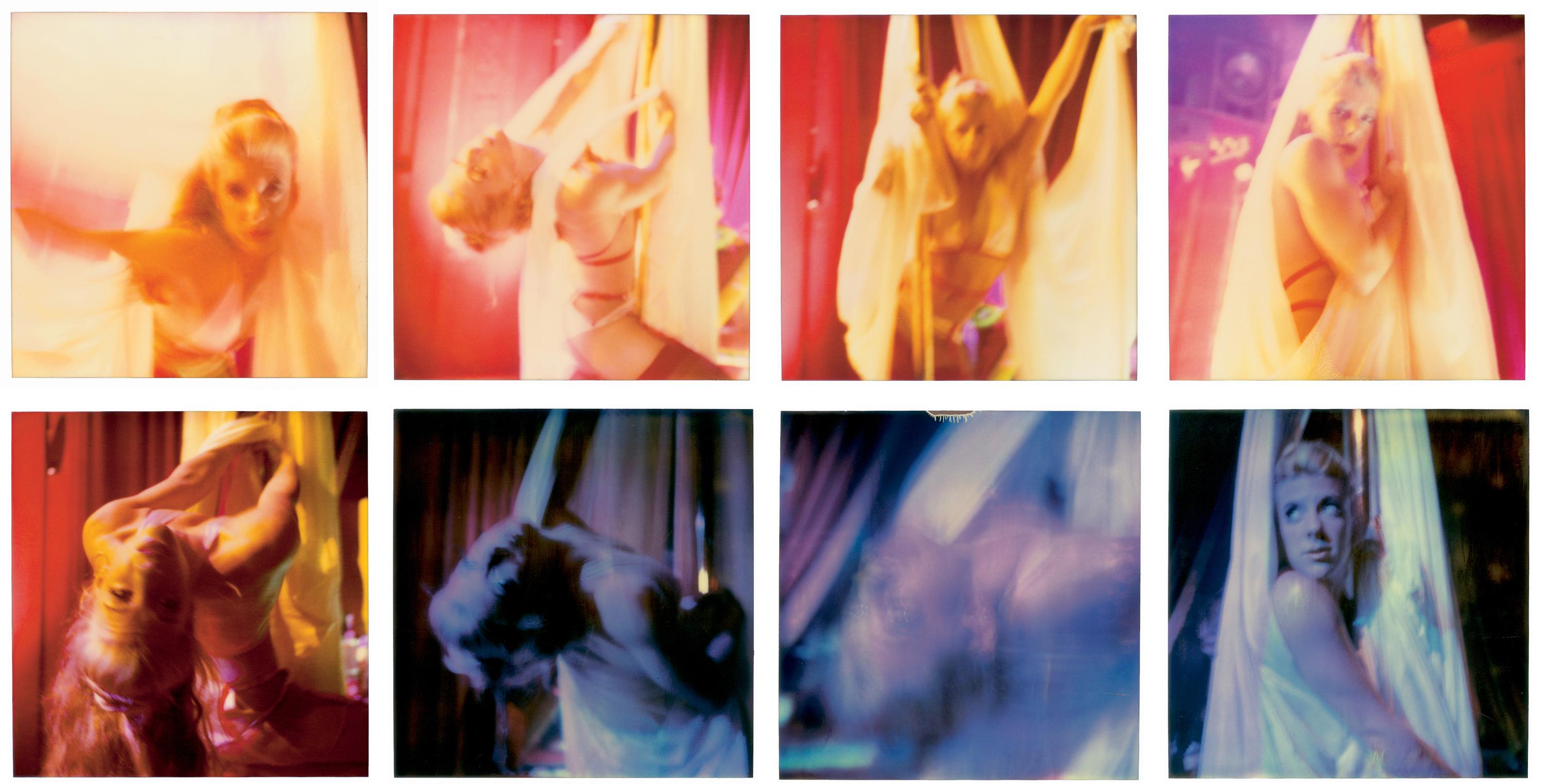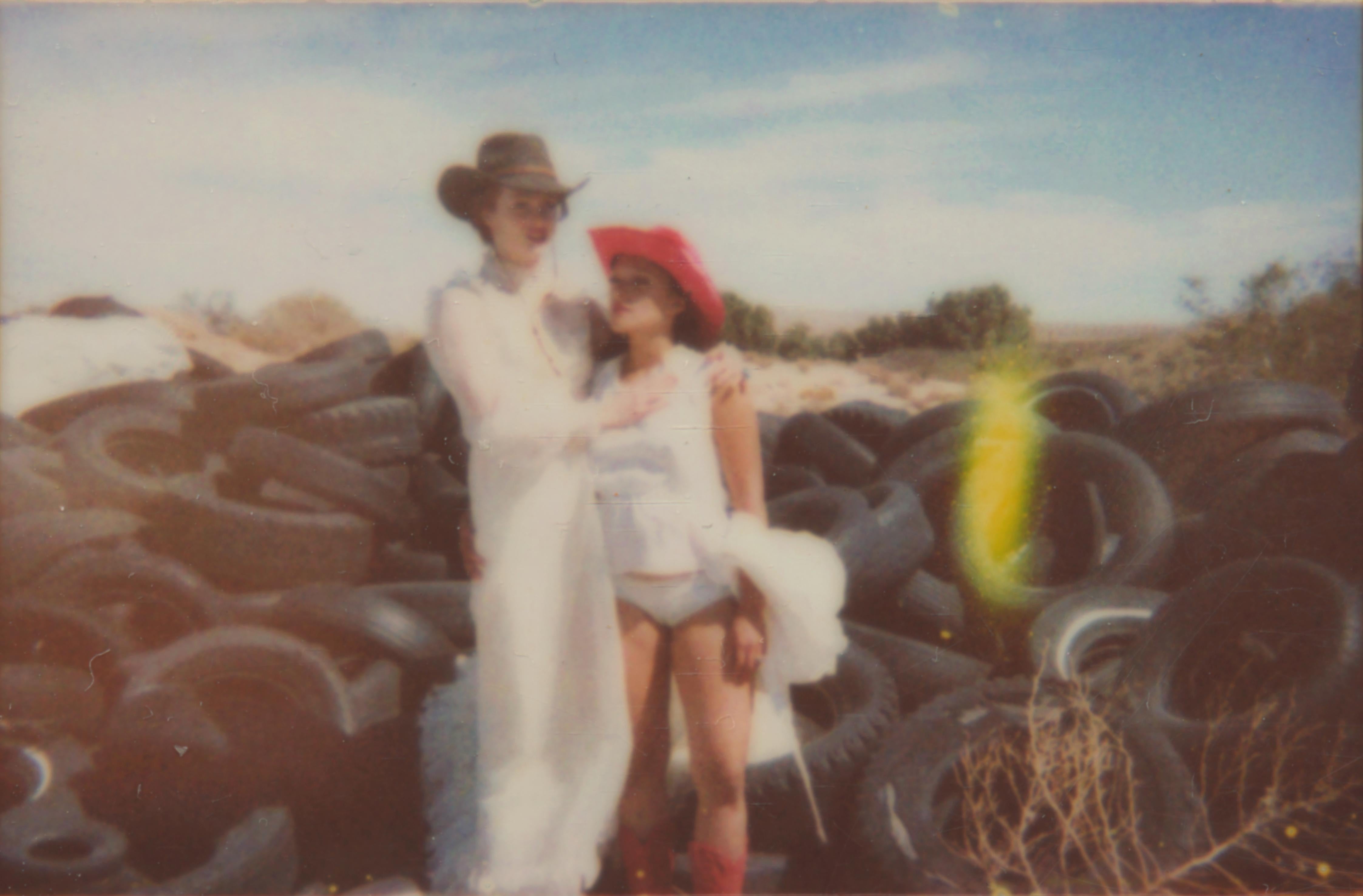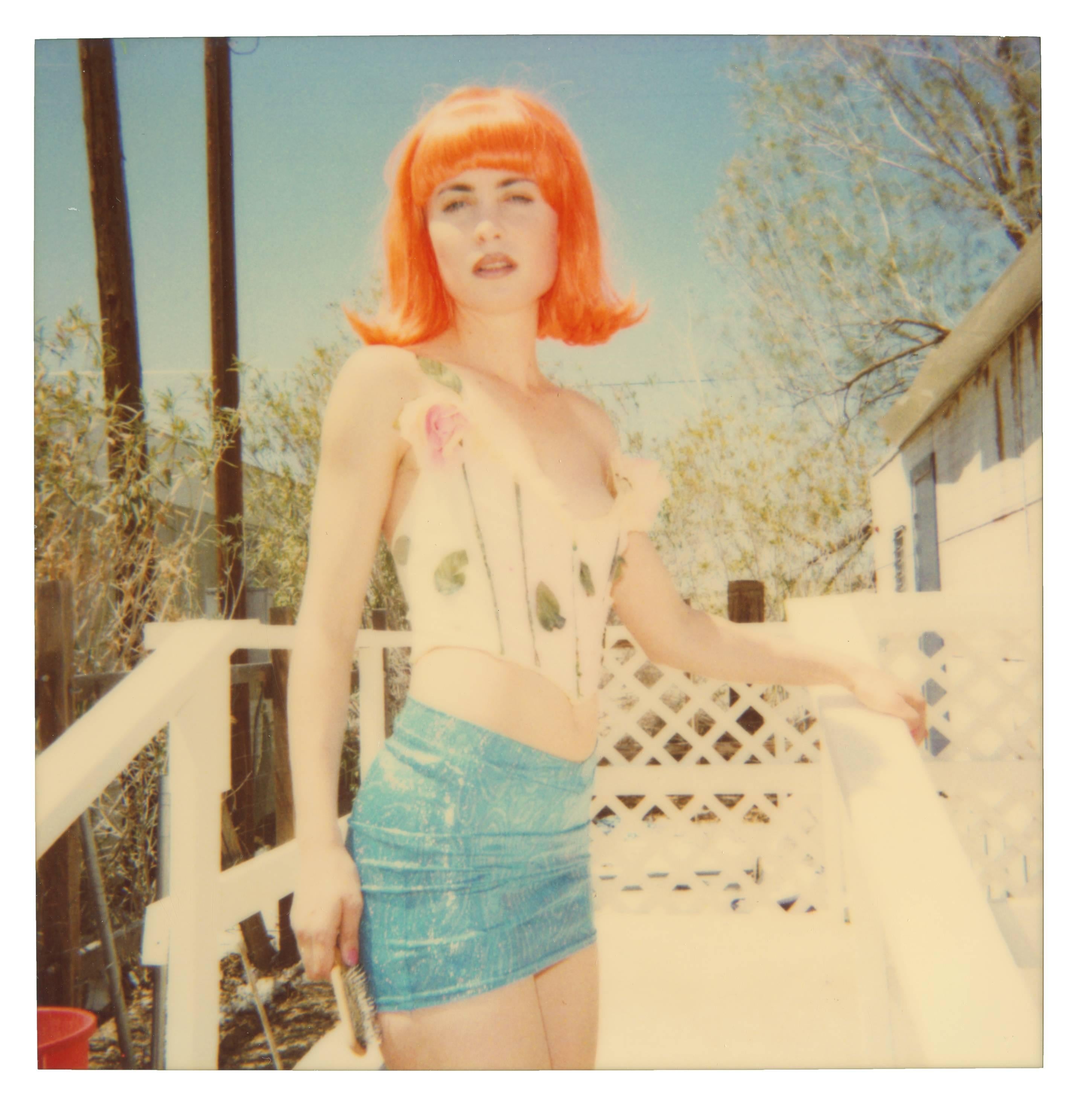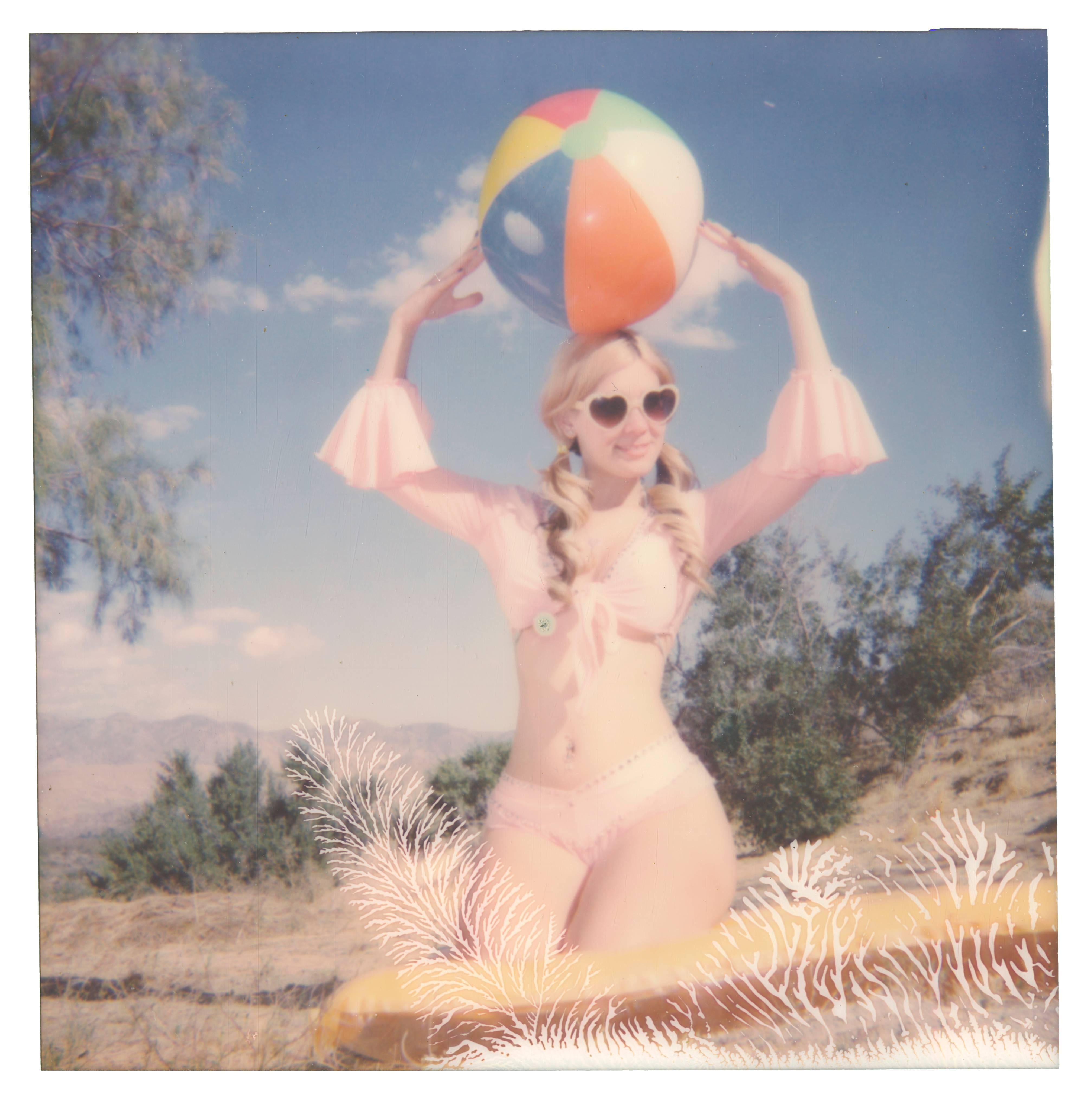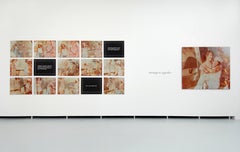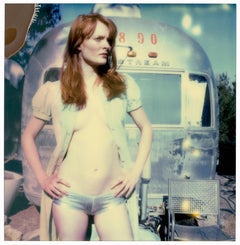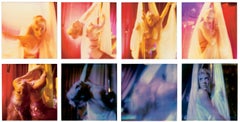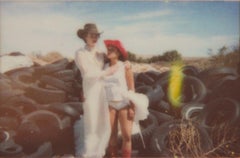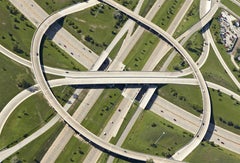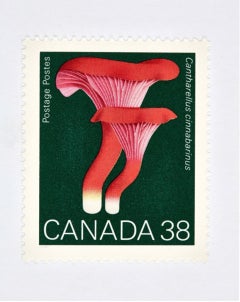Items Similar to Max in Pool - Contemporary, Landscape, Figurative, expired, Polaroid, analog
Want more images or videos?
Request additional images or videos from the seller
1 of 5
Stefanie SchneiderMax in Pool - Contemporary, Landscape, Figurative, expired, Polaroid, analog1999
1999
About the Item
Max in Pool (29 Palms, CA) - 1999
Edition 3/10,
48x46cm,
Analog C-Print, hand-printed by the artist on Fuji Crystal Archive Paper, based on a Polaroid.
Signature label and certificate.
Artist inventory Number 612.
Not mounted.
Stefanie Schneider: A German view of the American West
The works of Stefanie Schneider evoke Ed Ruscha's obsession with the American experience, the richness of Georgia O'Keefe's deserts and the loneliness of Edward Hopper's haunting paintings. So how exactly did this German photographer become one of the most important artists of the American narrative of the 20th and 21st century?
Born in Germany in 1968, photographer Schneider used to divide her time between Berlin and Los Angeles from the 90's until settling permanently where her process begins in the American West, in locations such as the planes and deserts of Southern California, where she photographs her subjects. In Berlin, Schneider developed and enlarged her works by hand.
This theme of preservation and deterioration is a core part of Schneider's oeuvre. In an interview in October 2014 with Artnet, the artist explained how her own experiences of pain and loss inspire her. ''My work resembles my life: Love, lost and unrequited, leaves its mark in our lives as a senseless pain that has no place in the present.''
''The ex-lover experiences the residues of love as an amputee experiences the sensation of a ghost limb.'' - Stefanie Schneider
Schneider's subjects are often featured in apocalyptic settings: desert planes, trailer parks, oilfields, run-down motels and empty beaches, alone, or if not, not connected with one another. ''It is the tangible experience of ''absence'' that has inspired my work,'' explained Schneider.
Barnebys, May 3rd, 2017
Stefanie Schneider interviewed by Dutch Filmmaker Willem Baptist
When did you first decide to work with Polaroids? Why do Polaroids seem to be so well tuned to our (artistic) senses, perception and minds?
I started using expired Polaroid film in 1996. It has the most beautiful quality and perfectly encapsulates my vision. The colors on one hand, but then the magic moment of witnessing the image appear. Time seems to stand still, and the act of watching the image develop can be shared with the people around you. It captures a moment, which becomes the past so instantly that the decay of time is even more apparent; – it gives the image a certain sentimentality. The Polaroid moment is an original every time. An artifact.
Why use a medium from the past?
For me, analog has always been there in the present. For the new generation, analog is interesting because it's new to them. I understand that people growing up in a digital age will wonder about its usefulness, but it's theirs to recover if they want to. When I first started working with Polaroid, it wasn't the past. It was a partially forgotten medium, but it existed nonetheless. It is mine by choice as there is no substitute for tangible beauty.
Is it imperfect?
The imperfect perfection in a “wabi-sabi” kind of way.
Wabi-sabi (侘寂) represents a comprehensive Japanese world view or aesthetic centered on the acceptance of transience and imperfection. The aesthetic is sometimes described as one of beauty that is imperfect, impermanent, and incomplete.
'If an object or expression can bring about, within us, a sense of serene melancholy and a spiritual longing, then that object could be said to be wabi-sabi'. 'Wabi-sabi nurtures all that is authentic by acknowledging three simple realities: nothing lasts, nothing is finished, and nothing is perfect.'
Is the Polaroid photograph recognizable or even sometimes cliché?
Absolutely! There's something cliché about the way I'm showing the American Dream. I live it myself, trying to find perfection in an imperfect world. Reaching for the horizon. The dream is broken; the cliché tumbles. There are different ways to involve an audience. You could make movies like Harmony Korine's 'Gummo' a masterpiece in my view but which would probably estrange a large part of an audience. A certain film education is a prerequisite. Or you can start with clichés, the audience then feels safe, which lures them into the depth of your world without them even knowing it or understanding where exactly they are being led to. Appealing to emotions and the sub-conscious. Normal, Change, New Normal.
You continually revisit the landscape of the American West in your work. What draws you back to this scene?
Southern California represents a dream to me. The contrast of Northern Germany, where I grew up, to the endless sunshine of Los Angeles was what first attracted me. The American West is my dream of choice. Wide, open spaces give perspectives that articulate emotions and desires. Isolation feeds feelings of freedom or sometimes the pondering of your past. The High Desert of 29 Palms has very clear and vivid light, which is vital. Expired Polaroid film produces 'imperfections' that I would argue mirrors the decline of the American dream. These so called 'imperfections' illustrate the reality of that dream turning into a nightmare. The disintegration of Western society.
Are you playing with the temporality of the material and the value of the moment itself?
The value of the moment is paramount, for it is that moment that you're trying to transform. All material is temporary, it's relative, and time is forever.
Why does analog film feel more pure and intuitive?
It's tangible and bright and represents a single moment.
The digital moment may stay in the box (the hard drive / camera / computer etc.)
forever, never to be touched, or put into a photo album, sent in a letter, or hung on a wall.
Printing makes it an accomplishment.
The analog world is more selective because it's real. Film is a choice.
The digital worldwide clicking destroys this moment. The generation without memories due to information overload and hard drive failures. Photo albums are a thing of the past.
Why does it feel this way?
That's how the human instinct works. When I was a child, every picture been taken was a special moment. Analog photographic film as well as Super-8 material were expensive treasures. My family's memories were created by choosing certain moments in time. There was an effort behind the picture. The roll of film might wait months inside the camera before it was all used. From there, the film required developing, which took more time, and finally, when the photos were picked up from the shop, the memories were visited again together as a family. Who knew then, how fleeting these times were. Shared memories was a ritual.
What's your philosophy behind the art of Polaroid pictures?
The 'obsolete' is anything but obsolete. Things are not always as they appear, and there are hidden messages. Our memories and our dreams are under-valued. It is there that real learning and understanding begins by opening yourself to different perspectives. Who we are and where we come from is important. A Polaroid is a testimony to our existence. But our time is fading fast.
What inspired you to use stop motion cinematography?
My work has always resembled movie stills. I remember the first time I brought a box of Polaroids and slid them onto Susanne Vielmetter's desk (my first gallery). Instantly, it became apparent that there was a story to tell. The stories grew. It was undeniable to me, that the emerging story was where I was destined to go. I've made four short films before my latest feature film, The Girl behind the White Picket Fence. This film is 60 minutes long with over 4000 edited Polaroids. Remember that our sub-conscious fills in blanks, the parts missing from the story between photograph stills allow a deeper and more personal experience for the viewer. That is, if you surrender yourself and trust me as the director to lead you somewhere you might not have ever been before.
Why do you think it is important to own art?
'We have art in order not to die of the truth'
Nietzsche
- Creator:Stefanie Schneider (1968, German)
- Creation Year:1999
- Dimensions:Height: 18.9 in (48 cm)Width: 18.12 in (46 cm)Depth: 0.12 in (3 mm)
- Medium:
- Movement & Style:
- Period:
- Condition:
- Gallery Location:Morongo Valley, CA
- Reference Number:1stDibs: LU65238243822
Stefanie Schneider
Stefanie Schneider received her MFA in Communication Design at the Folkwang Schule Essen, Germany. Her work has been shown at the Museum for Photography, Braunschweig, Museum für Kommunikation, Berlin, the Institut für Neue Medien, Frankfurt, the Nassauischer Kunstverein, Wiesbaden, Kunstverein Bielefeld, Museum für Moderne Kunst Passau, Les Rencontres d'Arles, Foto -Triennale Esslingen., Bombay Beach Biennale 2018, 2019.
About the Seller
4.9
Platinum Seller
Premium sellers with a 4.7+ rating and 24-hour response times
Established in 1996
1stDibs seller since 2017
1,019 sales on 1stDibs
Typical response time: 2 hours
- ShippingRetrieving quote...Shipping from: Morongo Valley, CA
- Return Policy
Authenticity Guarantee
In the unlikely event there’s an issue with an item’s authenticity, contact us within 1 year for a full refund. DetailsMoney-Back Guarantee
If your item is not as described, is damaged in transit, or does not arrive, contact us within 7 days for a full refund. Details24-Hour Cancellation
You have a 24-hour grace period in which to reconsider your purchase, with no questions asked.Vetted Professional Sellers
Our world-class sellers must adhere to strict standards for service and quality, maintaining the integrity of our listings.Price-Match Guarantee
If you find that a seller listed the same item for a lower price elsewhere, we’ll match it.Trusted Global Delivery
Our best-in-class carrier network provides specialized shipping options worldwide, including custom delivery.More From This Seller
View AllMoving in Together (Till Death do us Part) - analog, mounted, Installation
By Stefanie Schneider
Located in Morongo Valley, CA
Moving in Together (Till Death do us Part) - Installation - 2008
Edition of 5.
16 analog C-Prints , hand-printed by the artist on Fuji Crystal Archive Paper, based on 13 Polaroids, ...
Category
Early 2000s Contemporary Color Photography
Materials
Metal
Daisy in front of Trailer (Till Death do Us Part ) + Soundtrack LP - 80x78cm
By Stefanie Schneider
Located in Morongo Valley, CA
Daisy in front of Trailer (Till Death do Us Part) - 2005
Edition of 10, plus 2 Artist Proofs.
80x78cm,
Archival C-Print, based on a Polaroid.
Artist inventory 9250.
Signature label and certificate.
Not mounted.
This special Edition comes with the vinyl soundtrack of "Till Death do us Part" (directed by Stefanie Schneider and music by Daisy McCrackin)
Note: the additional images show the edition mounted.
Stefanie Schneider’s Till Death Do Us Part...
Category
Early 2000s Contemporary Color Photography
Materials
Photographic Paper, Archival Paper, C Print, Color, Polaroid
Dancer (Stay) - 8 pieces, smaller size, analog, Polaroid, Contemporary,
By Stefanie Schneider
Located in Morongo Valley, CA
The Dancer (Stay) - 2006,
38x36cm each, installed 81x159cm, Edition of 4/5.
8 analog C-Prints, hand-printed by the artist, based on 8 Polaroids.
Certificate and Signature label. ...
Category
Early 2000s Contemporary Figurative Photography
Materials
C Print, Color, Polaroid, Archival Paper, Photographic Paper
Wedding Day I (Till Death do us Part) - Polaroid, Contemporary, Love, Women
By Stefanie Schneider
Located in Morongo Valley, CA
'Wedding Day I' (Till Death do Us part) - 2005,
24.8 x 34.5cm,
Edition 4/10,
analog C-Print, hand-printed by the artist, based on a Polaroid
Certificate and Signature label.
Art...
Category
Early 2000s Contemporary Color Photography
Materials
Archival Paper, C Print, Color, Polaroid, Photographic Paper
White Trash Beautiful I (29 Palms, CA) featuring Radha Mitchell, analog, mounted
By Stefanie Schneider
Located in Morongo Valley, CA
White Trash Beautiful I (29 Palms, CA) - 1999
128x125cm, Edition 3/5,
analog C-Print, hand-printed by the artist on Fuji Crystal Archive Paper, based on a Polaroid.
Mounted on A...
Category
Early 2000s Contemporary Color Photography
Materials
Metal
Moneypenny with Beach Ball (Heavenly Falls) - Polaroid, Women, Bond - mounted
By Stefanie Schneider
Located in Morongo Valley, CA
Moneypenny with Beach Ball' (Heavenly Falls) - 2016
100 x 98 cm, Edition 4/10.
Archival C-Print, based on an original expired Polaroid.
Artist inventory 19597.04.
Mounted on Dibo...
Category
2010s Contemporary Color Photography
Materials
Photographic Paper, C Print, Polaroid, Archival Paper, Color
You May Also Like
Peter Andrew Lusztyk - Detroit I, Photography 2020, Printed After
By Peter Andrew Lusztyk
Located in Greenwich, CT
Detroit I
Digital C-Print / Archival Pigment Print
Available sizes:
40 x 60 in - Edition of 10
60 x 90 in - Edition of 5
Since its inception, Lusztyk’s Interchanges project has take...
Category
2010s Contemporary Color Photography
Materials
Archival Paper, Photographic Paper, C Print, Digital, Pigment, Digital P...
Peter Andrew Lusztyk - Balloon I, Photography 2020, Printed After
By Peter Andrew Lusztyk
Located in Greenwich, CT
Balloon I
Digital C-Print / Archival Pigment Print
Available sizes:
40 x 60 in - Edition of 10
60 x 90 in - Edition of 5
Locations from around the world.
Category
2010s Contemporary Color Photography
Materials
Archival Paper, Photographic Paper, C Print, Digital, Pigment, Digital P...
Peter Andrew Lusztyk - Canada 38 Mushroom (Green), 2021, Printer After
By Peter Andrew Lusztyk
Located in Greenwich, CT
Canada 38 Mushroom (Green)
Digital C-Print / Archival Pigment Print
Edition of 20 per size
Available sizes:
36 x 27
“Collectible” series is a macro level exploration of coins, bills...
Category
2010s Contemporary Color Photography
Materials
Archival Paper, Photographic Paper, C Print, Digital, Pigment, Digital P...
Tyler Shields - Mouth Drip, Photography 2012, Printed After
By Tyler Shields
Located in Greenwich, CT
Series: Mouths
Chromogenic Print on Kodak Endura Luster Paper
All available sizes and editions:
20" x 30"
30" x 40"
40" x 60"
48" x 72"
63" x 84"
Editions of 3 + 2 Artist Proofs
Tyl...
Category
2010s Contemporary Color Photography
Materials
Luster, Archival Paper, Photographic Paper, C Print, Digital, Archival P...
Tyler Shields - High heels (This is not a reflection), 2024, Printed After
By Tyler Shields
Located in Greenwich, CT
Series: Indulgence
Chromogenic Print on Kodak Endura Luster Paper
All available sizes and editions:
18" x 18"
30" x 30"
45" x 45"
60" x 60"
70" x 70"
Editions of 3 + 2 Artist Proofs
...
Category
2010s Contemporary Figurative Photography
Materials
Luster, Paper, Archival Paper, Photographic Paper, C Print, Digital, Arc...
Tyler Shields - Legs in the Gold Room, Photography 2024, Printed After
By Tyler Shields
Located in Greenwich, CT
Series: Indulgence
Chromogenic Print on Kodak Endura Luster Paper
All available sizes and editions:
18" x 18"
30" x 30"
45" x 45"
60" x 60"
70" x 70"
Editions of 3 + 2 Artist Proofs
...
Category
2010s Contemporary Figurative Photography
Materials
Luster, Paper, Archival Paper, Photographic Paper, C Print, Archival Pig...
Recently Viewed
View AllMore Ways To Browse
Watches Made In 1999
20th Century Georgian Mirror
Crystal From Holland
Leaded Crystal Box
90s Wall Mirror
John R Neill
John Wayne Poster
Joichi Hoshi Woodblock Prints
Jonathan Shlafer
Jordan Sheffield
Journal Des Demoiselles
Karel Appel Poster
Karl Klein
Kaws The Promise
Kayla Mahaffey
Keith Haring Barking Dog
Keith Haring Safe Sex
Keith Haring Story Of Red And Blue
